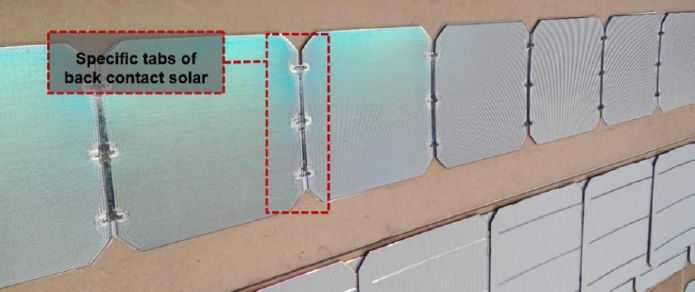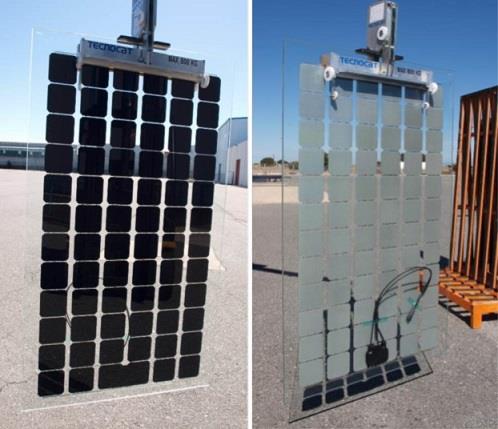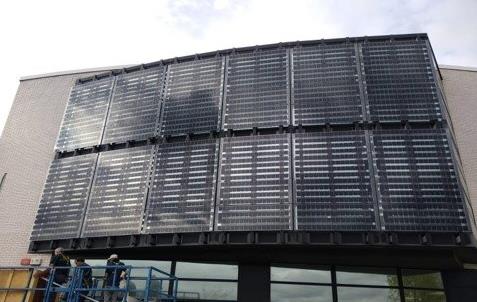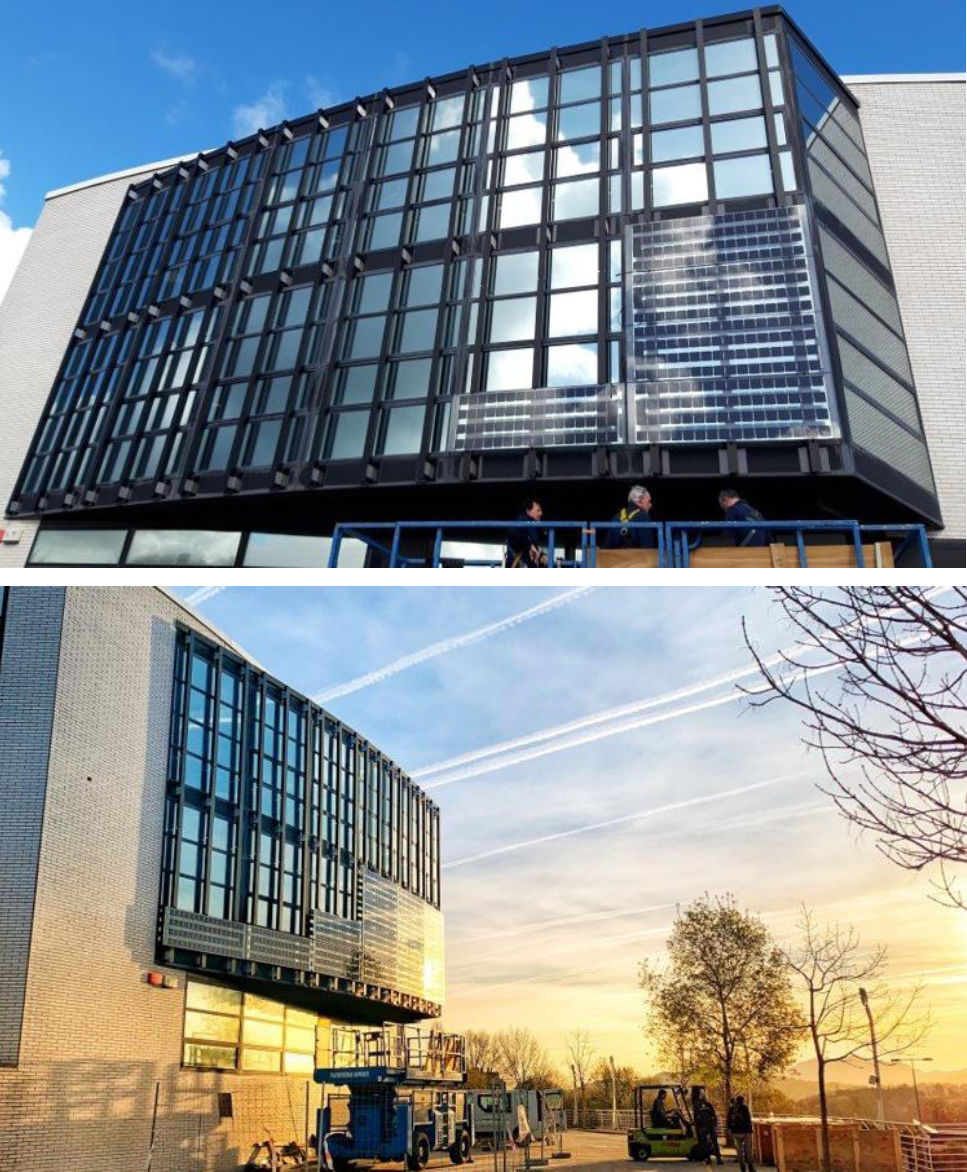Brief Concept Description
The manufacture of high efficiency solar cells at low production costs is the main objective pursued by the photovoltaic industry, and several research developments actions are focusing on this issue to find new solutions. The BIPV sector, on the other hand, has also shown a strong interest for photovoltaic modules that offer improved aesthetics and design flexibility, and thus can be more easily integrated into the buildings’ envelope. In this regard, it has been observed in the last decade a growing interest for back-contact solar cells which have been gradually introduced with industrial applications. Back-contact cells have both the positive and negative external contact pads positioned on the rear surface of the photovoltaic cell. In this way, it is possible to improve the performance of the device avoiding the front contact shadow loss and, at the same time, to create a homogeneous appearance without any reflectance or visible cells interconnections on the front side. Back-contact cells are then a good option for BIPV applications where semi-transparency, high performances and attractive appearance are required.

Figure 82. Detail of specific tabs of back-contact solar cells (Source: Onyx Solar).

Figure 83. Prototype of back-contact solar cells module developed by ONYX within the framework of H2020 PVSITES project (Source: Onyx Solar).
Architectural and Technological Integration into the Envelope
The design process of BIPV systems based on back-contact solar cells modules is performed as for any other BIPV system and considering the same aspects, such as mechanical feasibility, installed PV capacity, daylight transmission, ventilation of the façade, aesthetical appearance, besides to other specific technical needs of the building and the requirements of the local construction and PV regulations. The maintenance costs for this solution are low, similar to that of a normal passive or active glass façade and the durability of this system is similar to that of any other BIPV glass-glass based on c-Si technology module.
For some building solutions such as skylights and curtain walls, decision makers look for certain light transmission values and a compromise between cell density (see-thru degree), efficiency and added aesthetical value is needed. The use of back-contact cells perfectly fits to these needs, as they harvest solar radiation to produce electricity with high performances, can be integrated in full opaque or transparent glass-glass modules and provide a superior aesthetical appearance with respect to traditional BIPV modules, since the use of visible front bus bars is avoided.
The BIPV modules improve the insulation and acoustic properties of the building and at some extent also provide a shading effect. In addition, they enable the production of green electricity lowering the energy bill of the tenants. Compared to amorphous Silicon glass or even compared to crystalline Silicon glass, this technology offers greater nominal power capacity per unit of area since back-contact solar cells offer efficiencies as high as 22%: this means that for the same installed PV capacity the required area is lower. In addition, the light transmittance of the modules can be customized depending on the building needs by spreading solar cells in the module in more or less dense configurations. The efficiency per module can be as large as 160 W/m2 (16%) even at cells densities offering 35% of light transmission, so that the entrance of natural visible light into the building is ensured without compromising the energy generation.
The layout of the modules can be either vertical or horizontal, depending on several factors such as mounting system, type of surface etc. Since the performance of the BIPV modules is affected by solar irradiation, the surface of the solar installation must be analysed in detail during the design stage to define optimal orientation and avoid as possible external shadows due to trees, other buildings etc. over the PV modules.

Figure 84. Ventilated façade based on glass-glass back-contact c-Si cells technology BIPV modules developed by Onyx Solar within the framework of PVSITES project at Tecnalia's offices in San Sebastian, Spain.
Integration into the Building: System and Comfort
This solution allows an easy installation, since from a mechanical standpoint this operation is performed in the same way as conventional glass. As for any other BIPV unit, back-contact solar cells glass-glass PV modules must be connected by an electrical installer with proven experience in PV installations and low-voltage systems. The design of the PV installation must be certified by a registered professional electrical engineer and the PV BOS design and installation procedures must comply with local codes and requirements from all relevant authorities.
Back-contact cells BIPV systems, as any electrical device, require a good ventilation that ensures a proper thermal dispersion. Any issue preventing it, such as the use of silicone for sealing the wires or improper wiring tubing sections, etc must be avoided. Accessibility and security to the BIPV location are also issues to be considered.

Figure 85. Installation of the ventilated façade based on glass-glass back-contact c-Si cells technology BIPV modules at Tecnalia's offices in San Sebastian, Spain.
Acknowledgment
PVSITES project has received funding from the European Union’s Horizon 2020 research and innovation programme under grant agreement Nº 691768.